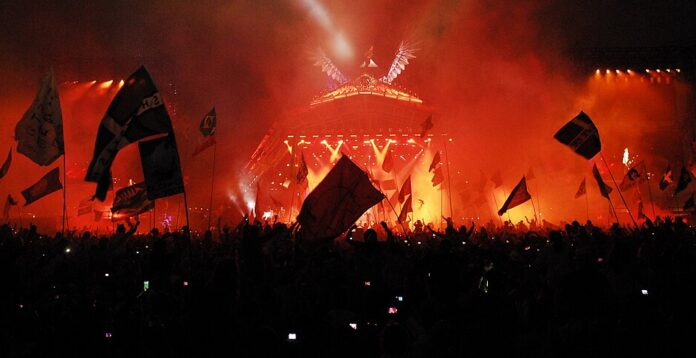Glastonbury under fire after claims festival is a “disaster waiting to happen” amid crowd fears
As thousands descend on Glastonbury this weekend, chilling warnings from a whistleblower have cast a dark cloud over the UK’s flagship festival. Dubbed “a disaster waiting to happen” by an insider, concerns about overcrowding and poor planning have reignited fears of fatal crowd crushes, echoing recent tragedies from Astroworld to Brixton Academy.
The British festival scene has exploded in recent decades, becoming a multibillion-pound industry with over 850 events annually. But with that growth comes chaos. Following last year’s frightening bottlenecks at Glastonbury—particularly during sets by the Sugababes and Charli XCX—festival boss Emily Eavis has slashed ticket numbers in 2025, admitting that crowd safety has now become the event’s number-one priority.
“Crowd management has become pretty much our biggest priority,” Eavis said. “We’re constantly planning, tweaking and updating our operations to make sure everyone is safe.”
Yet critics say efforts to safeguard festivalgoers remain inadequate. A May exposé quoted a Glastonbury worker claiming lives are at risk. And London Assembly member Susan Hall warned in April that Notting Hill Carnival—another major UK event—faces the real threat of a “mass casualty incident”.
Experts agree the danger isn’t in the crowd, but in the system. “Poor management leads to fatal crushes,” said Professor John Drury, a crowd psychology expert. He dismissed popular advice like ‘breathe deeply’ or ‘have an exit plan’ as dangerously naive. “By the time a crush begins, it’s too late. The real responsibility lies with organisers, not individuals.”
This insight is echoed by Keith Still, a global authority on crowd dynamics. “The DNA of these disasters is always the same: poor signage, inadequate staffing, no proper flow controls,” he explained. He called out the industry’s tendency to blame “rowdy fans” rather than accepting systemic failings.
Embed from Getty ImagesThe tragic 2021 Astroworld festival in Houston—where 10 died—has become a textbook case. Despite swirling media hysteria over drugs and “Satanic” rumours, investigations pinned the blame on a collapse in basic safety protocols. And yet, some festivals are still repeating the same mistakes.
Even new events are being criticised. Fans at London’s Lido festival said they were packed shoulder-to-shoulder with few working toilets and little crowd control. “It felt unsafe and profiteering,” one attendee said.
But it’s not all bleak. The industry is adapting slowly. Glastonbury now uses real-time updates via its app, staggered scheduling to split up crowds, and dynamic route closures to ease pressure points. Manchester’s Parklife festival recently shut down a stage entirely when overcrowding became unmanageable—a move praised by experts.
Anne Marie Chebib, chair of the UK Crowd Management Association, sees both progress and pitfalls. “The risks today are more layered—from weather threats to deliberate acts of violence,” she said. “But at least we’re finally talking openly about these issues.”
And attitudes on stage are shifting, too. Since Astroworld, artists like Billie Eilish and Adele have stopped performances mid-show to protect fans from crushes. While it’s never been easier for organisers to halt a set, the question is when and how that power should be used.
For most attendees, the thrill of live music in a shared space is still worth the risk. “In a world that can feel quite bleak,” Eavis said, “festivals like Glastonbury stand for joy, peace, unity and new ways of thinking.”
But with experts warning that joy must never come at the expense of safety, the burden now lies with organisers to prove they’ve learned from past mistakes—before another celebration turns catastrophic.
